20+ Sample Email Resignation Letters
-

Formal Resignation Letter
-
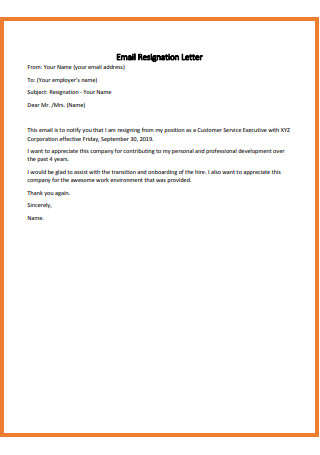
Email Resignation Letter
-

Email Resignation Letter to Manager
-
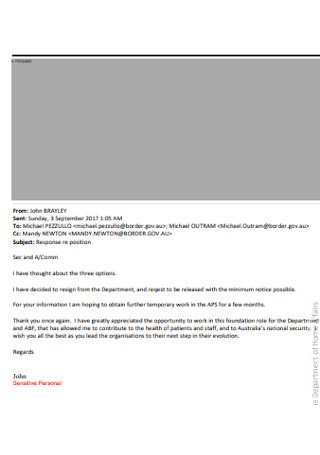
Resignation Letter from Former Chief Medical Officer
-
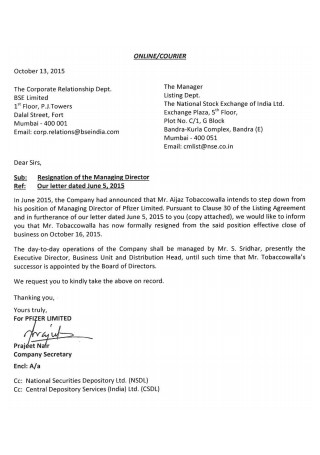
Letter of Resignation from MD
-
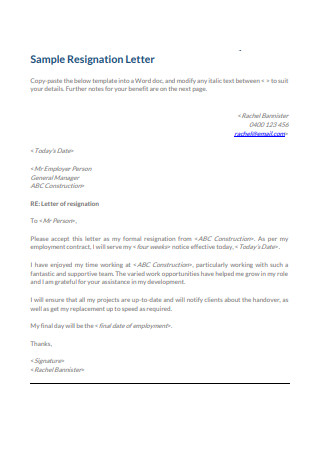
Sample Email Resignation Letter
-
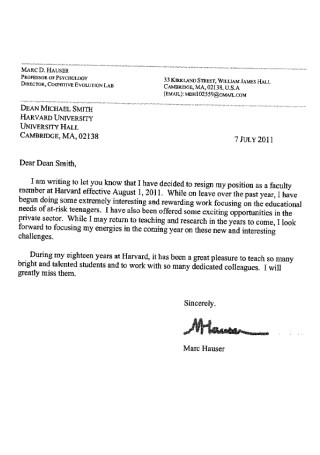
Faculty Member Resignation Letter
-
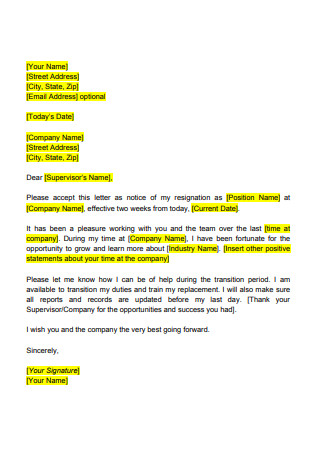
Standard Resignation Letter
-

Resignation Letter
-
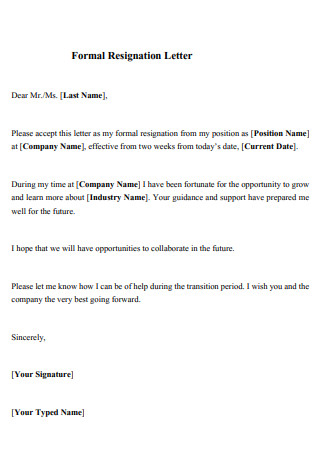
Formal Email Resignation Letter
-
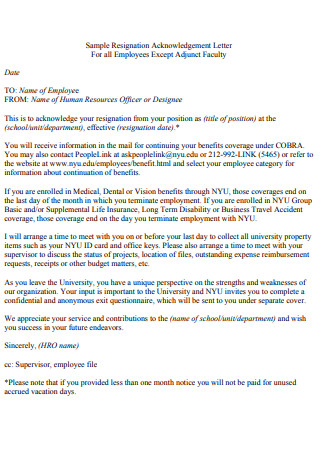
Sample Resignation Acknowledgement Letter
-
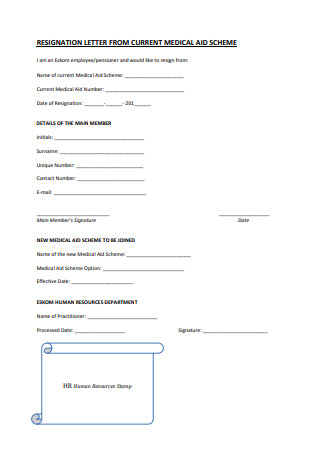
Resignation Letter from Medical
-
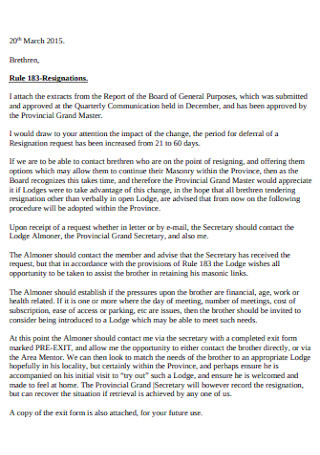
Simple Email Resignation Letter
-
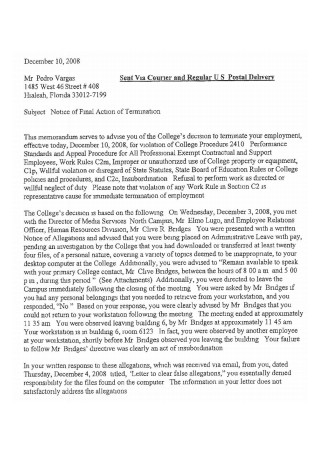
Email Resignation Letter Format
-
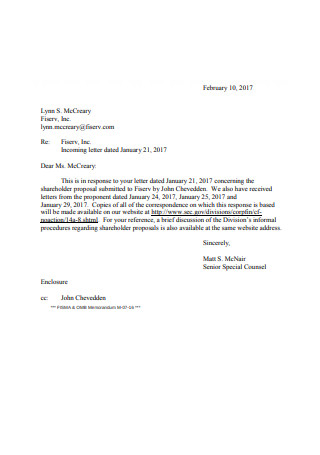
Formal Email Resignation Letter
-
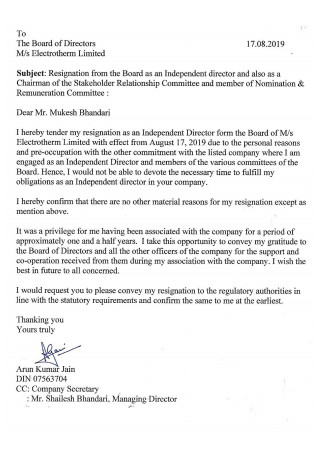
Resignation Letter from Board of Director
-
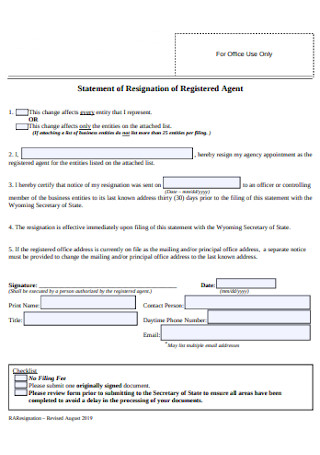
Statement of Resignation of Registered Agent
-
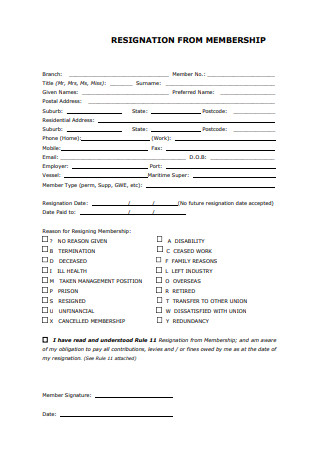
Letter of Resignation from Membership
-
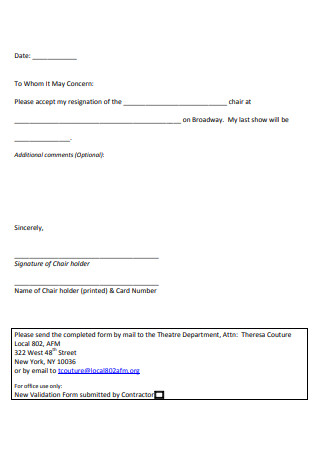
Printable Resignation Letter
-
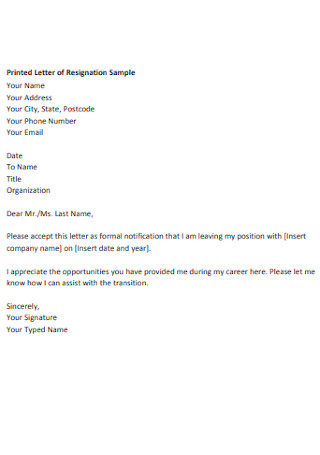
Printed Letter of Resignation Sample
-

Formal Email Resignation Letter
-
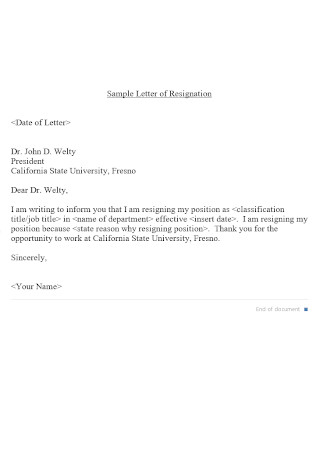
Sample Email Rejection Letter Template
download now -
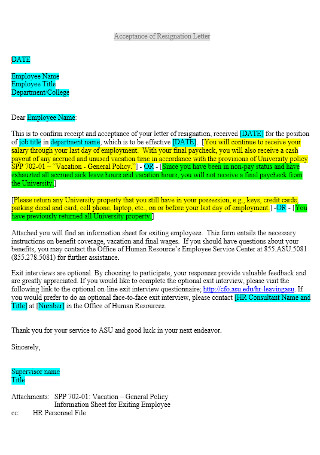
Acceptance of Resignation Letter
download now
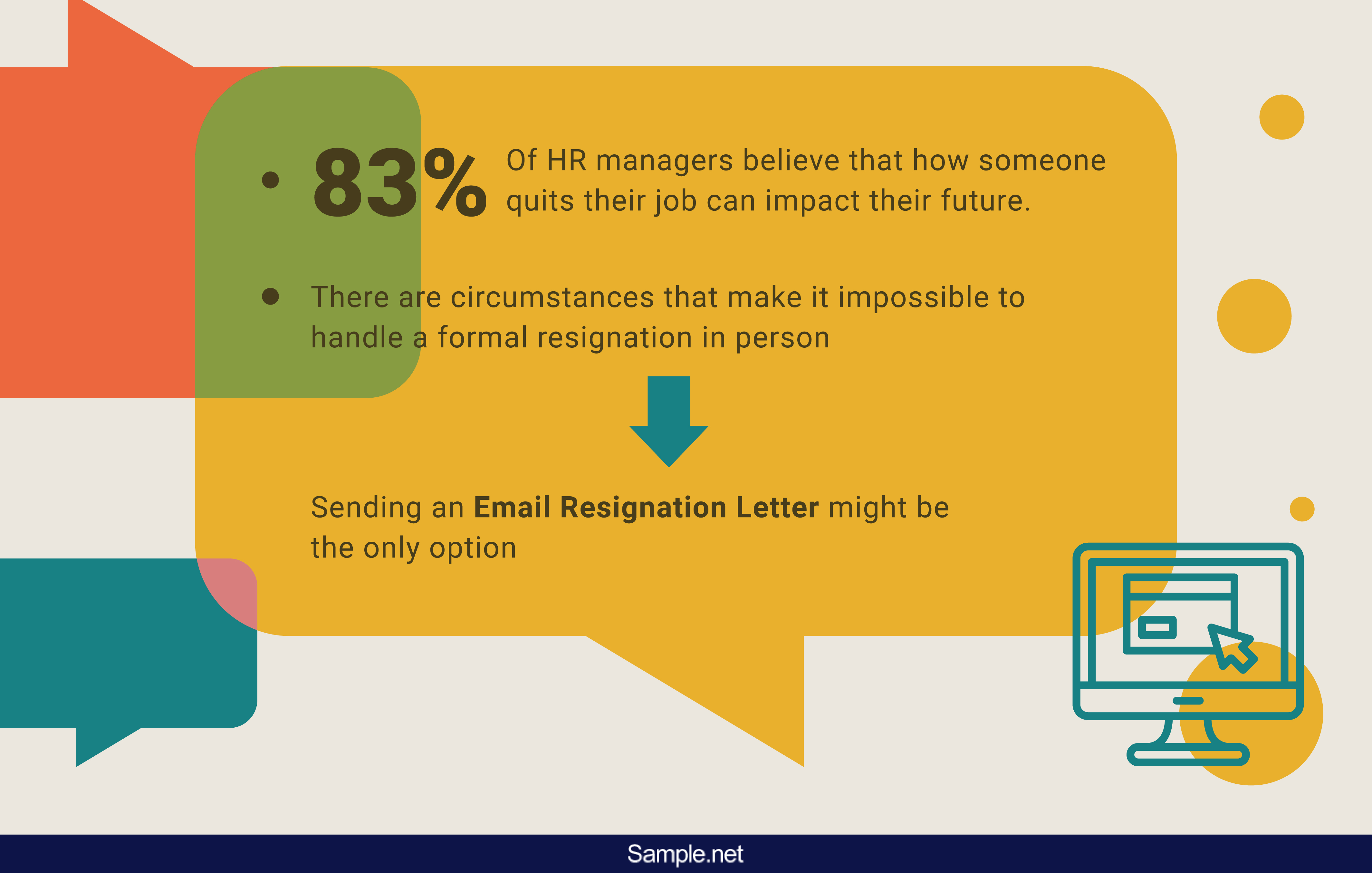
What Is an Email Resignation Letter?
Quitting your job via email is considered to be an informal means of departure. However, there are instances that make it acceptable. For example, freelance employees who work remotely are only able to contact their employers through different telecommunication channels. If you work in Singapore and your manager is in Australia, it only makes sense to submit your resignation letter via email. Otherwise, you’ll need to wait another few weeks for the post office to finally deliver your letter. Those who are under an abusive manager or have experienced unfortunate occurrences in a psychologically unsafe environment may find a letter of resignation email the safest option. While you may be sacrificing the stability of your network, your safety must always come first. The email must formally express your intentions to leave the company and by when.

Why Are Resignation Letters Important?
You might be wondering why it’s still necessary to write a resignation letter when you could easily drop everything you’re doing and leave without prior notice. But if you want to avoid getting a bad reputation in the corporate world, submitting a resignation letter is a matter of professional courtesy. It’s a great way to develop a good network for future references as you try to advance in your field of expertise. The act itself can also create a paper trail to document the event and prove that you have given notice on a certain date. This will make processing much easier for you to do as you collect your final paycheck and benefits.
It might seem tempting to ignore all the calls and emails you’ve been receiving from your employer, but no matter how unhappy you are with your job, a formal resignation is always advisable.
How to Create an Email Resignation Letter
According to Forbes, over two million Americans are voluntarily leaving their jobs every month. It’s an alarming fact that could be rooted in a variety of factors, which include poor management, a toxic workplace environment, and a low salary rate. But if you’re truly unhappy with where you are in your career, the first step to embarking on a new venture is to leave your current employer. To write an email resignation letter, take note of the following steps:
Step 1: Identify Your Recipient.
In most cases, your email message will have more than one recipient. While addressing your boss, remember to carbon copy (cc) the Human Resources office so they could secure a file of your resignation. Another copy of the email should be kept on your personal record in case your manager decides to deactivate your account immediately.
Step 2: Create the Subject Line.
The best subject lines are kept brief and coherent. It can be as simple as “Resignation – Your Name,” or anything of a similar sense. Being straightforward is always a good thing, as it helps ensure that your manager does not overlook your correspondence from all the emails he receives. You can choose to write something different to stand out, as long as your intentions are made clear in one read.
Step 3: Begin with a Formal Greeting.
Note down the last name and title of your supervisor for the address line of your email. This is done to show that you are addressing that particular person directly in your email message. Simple introductions like “Dear,” “Hello,” or “Mr./Ms./Mrs.,” followed by your manager’s last name, would do. Be sure to check the correct spelling of your recipient’s name so as not to offend anyone with your lack of research.
Step 4: Write a Statement of Resignation.
The first paragraph of your email message must state that you are resigning from the company as well as the date when your resignation is effective. Listing the date of your final day will give your employer the right amount of time to prepare for the turnover. Getting right to the point might seem overwhelming at first, but it’s the best way to maintain clarity with your letter. Your position title may also be added for emphasis.
Step 5: Include a Section of Thanks.
Though this is optional, it won’t hurt to include a second paragraph for a few words of gratitude. It can be as short and as generic as you want it to be. But if you have nothing good to say, you can wish nothing but the best for your boss to sustain a positive relationship during your final days of employment.
Step 6: Highlight Key Information.
Are there any steps or key information that the recipient would need to be aware of in regard to your transition? It can be about an ongoing project you’ve been working on, important files that you have stored in your account, or passwords that could be useful for the next employee. These details can be worked out before you officially exit the company so you won’t have to worry about being bothered after you have left. If nothing important comes to mind, you can offer a hand to help ensure a smooth transition.
Step 7: Close the Email Message.
Lastly, end the letter with a closing statement followed by your signature. It should remain polite and respectful, similar to how you started writing the letter. An email signature containing your non-work contact information can be used as your personal signature. You could also keep it simple by using your full name instead.

Printed Resignation Letters vs. Email Resignation Letters
Technology has made it easier for us to deliver a message to a recipient through various methods and platforms. It has even given us the chance to avoid in-person confrontations with the help of online exchanges. These days, many people have considered writing email letters rather than printed letters to resign from their current jobs. While emails are convenient in many ways, an email resignation letter isn’t exactly a formal approach to a serious affair. Printed resignation letters leave a better impression on your soon-to-be ex-boss by denoting a sense of professionalism in the way you communicate. Submitting a printed letter to your manager is also an opportunity for you to discuss your decision coherently. It even provides your employer with valuable insights in terms of what they could do to increase employee retention rates. But if handing over a printed letter is not feasible in your case, emailing a letter of resignation is the only appropriate alternative to try.
The Dos and Don’ts of Email Resignation Letters
If you need to resign from your current job via email, there are a few things to remember when constructing your email message. Apart from remaining polite and professional, the letter must also include all the pertinent information related to your resignation. This way, you can leave the company on a more positive note. Consider the guidelines below to produce the appropriate email resignation letter.
What to Do
1. Do provide two weeks’ notice.
Giving at least two weeks’ notice to your employer is standard practice in any business environment. Some companies even require longer transitional periods to give recruiters enough time to search, hire, and train a new employee. While it’s not unusual and sometimes inevitable for an employee to file for an immediate resignation, you must be considerate of how your resignation may impact the company’s standard operations. This is usually stated in your employment contract or union agreement, so be sure to review those guidelines when resigning from a job.
However, if your employer asks you to stay beyond the agreed period, it is not your obligation to stay. Don’t feel compelled to continue working for the company if you’ve already established the final date of your resignation.
2. Do address it to the right person.
The first person who has to be notified of your departure is your immediate supervisor, with another copy of the resignation letter to be addressed to the head of your Human Resources department. One’s name and personal contact information must be included in the content of the letter for quick identification. It’s important to secure a record of the email resignation letter in your account for future reference.
3. Do keep it short and sweet.
Be sure to keep the contents of your letter as brief as possible. A maximum of two to three paragraphs would be enough to get your message across more concisely for the reader to grasp. The letter must cover all the necessary angles of the situation, which includes details of your resignation and the date it is in effect. It’s a good idea to omit words or phrases that play no significance in the context of your letter. Any other information that may be dealt with over a follow-up email or in conversation can be reserved for later.
4. Do use a professional tone.
Regardless of how casual your workplace environment is, you still need to submit your resignation email in a formal tone. The letter is considered to be a legal document that may serve as evidence of your exit from the company. Hence, you want to avoid a chatty tone and stick to the usual Business English as the preferred language. Proper formatting is also essential for formality reasons.
5. Do offer your assistance.
If it’s possible, you can offer to help the person who will take your place during the transition period and afterward. The offer may not be accepted by the other party, but the act itself will be appreciated. This is especially important for employees who play a huge role in the company’s daily operations. Those who fill a single position in the company that no other employee can replace for the time being are encouraged to assist in the recruitment and onboarding of a new hire. Finding a replacement is not that simple, so a helping hand is sure to go a long way.
6. Do proofread the letter before you send it.
Imagine submitting a resignation letter that’s filled with errors that could’ve been avoided if you only took the time to review it. It might have been nothing more than an innocent mistake, but it may also seem as if you aren’t taking the situation as seriously as you should. Catch any grammatical and spelling mistakes before you click send. Once you have finished typewriting the contents of your email resignation letter, check it multiple times for any mistakes that might have been missed. You might even want to ask a friend or family member to read it over just to double-check the letter’s content.
What Not to Do
1. Don’t go into details.
You don’t need to explain why you’re leaving. It’s perfectly acceptable to stick with something generic about your decision to resign from the company. Regardless of the factors that prompted you to make this decision, a resignation letter is not the best place to rant your frustrations and ill feelings toward the management or your colleagues. If you want to make your reasons known for the benefit of others, you may discuss matters informally with your superior right before you leave.
2. Don’t be negative.
When talking about your learnings and experiences in the company, avoid saying something that could offend your co-workers and managers. Bad-mouthing your colleagues can sometimes say a lot about you and less about them. You also have to be careful about the tone you use. It’s good to keep it neutral or friendly to avoid problems that could affect you later on. There’s no point in ending things on a sour note, especially when you want to establish a strong network as you move forward in your career.
3. Don’t brag about your new job.
Even if you’ve managed to land a job in one of the reputable organizations in the industry, there’s no reason to be boastful about it. The path you have chosen to pursue is not anyone’s business but your own. If you’ve been hired by a company that promises a better opportunity or a higher salary rate than your previous employer, keep it to yourself. The letter should focus on the central message you want to convey and not the things that drove you to make your decision.
4. Don’t ask questions related to your pay or benefits.
Perhaps you have questions you want to raise in regard to compensation or benefits that come with your last paycheck. Since the email will be submitted to both your superior and the Human Resources office, you might think that any concerns regarding the said matter will be addressed accordingly. But you don’t want to sound selfish or overly demanding when you break the news to them, so it’s best to handle these issues separately. You can also save these questions for a video call or a follow-up email with your employer as you finalize your resignation.
5. Don’t hesitate to express your gratitude.
Even if you are unhappy with the company, you might have learned a thing or two throughout your employment that is worth noting. Maintaining a good relationship with your employer can be used to your advantage, especially when you ask for a reference letter in the near future. Thus, this a good time to give thanks for the opportunity to practice your skills and build your character. It might not have been the best couple of months or years of your life, but it’s always good to see the silver lining in every bad experience.
6. Don’t forget your contact information.
Your employer might need to get in touch with you within the next few months to finalize some documents relevant to your employment. Any non-company email address, an updated phone number, and other contact information would be necessary to share. Your contact details may still be useful long after your departure, especially when there are documents that need to be accessed, filed, or signed for whatever reason.
It’s a wise idea to write your email resignation letter with a sound mind. Proper resignation etiquette is essential to maintain a harmonious relationship with your former employer and colleagues long after you have left. It’s one way to obtain helpful networking advice and receive a positive job letter of recommendation for when you wish to move forward in your career path. If you don’t feel confident enough to write the letter on your own, feel free to download a resignation letter template as a guide. A well-written email resignation letter is likely to help you move on from your job gracefully as you step into a new chapter in your life.
